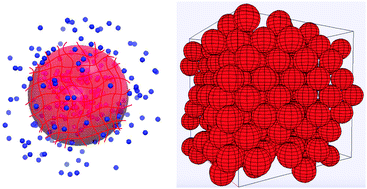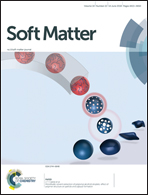Concentration-dependent swelling and structure of ionic microgels: simulation and theory of a coarse-grained model
Abstract
We study swelling and structural properties of ionic microgel suspensions within a comprehensive coarse-grained model that combines the polymeric and colloidal natures of microgels as permeable, compressible, charged spheres governed by effective interparticle interactions. The model synthesizes the Flory–Rehner theory of cross-linked polymer gels, the Hertz continuum theory of effective elastic interactions, and a theory of density-dependent effective electrostatic interactions. Implementing the model using Monte Carlo simulation and thermodynamic perturbation theory, we compute equilibrium particle size distributions, swelling ratios, volume fractions, net valences, radial distribution functions, and static structure factors as functions of concentration. Trial Monte Carlo moves comprising particle displacements and size variations are accepted or rejected based on the total change in elastic and electrostatic energies. The theory combines first-order thermodynamic perturbation and variational free energy approximations. For illustrative system parameters, theory and simulation agree closely at concentrations ranging from dilute to beyond particle overlap. With increasing concentration, as microgels deswell, we predict a decrease in the net valence and an unusual saturation of pair correlations. Comparison with experimental data for deionized, aqueous suspensions of PNIPAM particles demonstrates the capacity of the coarse-grained model to predict and interpret measured swelling behavior.

- This article is part of the themed collection: Electrostatics and Soft Matter


 Please wait while we load your content...
Please wait while we load your content...
